
The Five Channels: Attacking movement on Football Manager
As much as anyone loves the majestic performances of Maldini, Baresi and Bonucci, there’s nothing quite like a well-scored goal. Much like everything else in football, though, attacking and scoring are about movement as well as skill. What players do with the ball at their feet you can’t control, but you can control where they do it. Create overwhelming attacking movement on Football Manager with what I call the Five Channels..
What are the Five Channels?
Of a Catalan coach and a segmented pitch
When Pep Guardiola took charge of Bayern Munich in 2014/15, there were a few who remained sceptical. He was the most revolutionary football coach since Arrigo Sacchi, but could he achieve the same heights without the footballing culture that he had built his success upon? In the end, he did; but not without a period of adaptation.
Early in his first season, images appeared of the special training pitch he was using. His goal was to teach the Bayern players what Barça players learn from the moment they step into the Catalan club’s academy, where to stand at any moment of play. That is Positional Play.

Far from the usual 18 zones of a football pitch division, Guardiola segmented his into four horizontal lines, and five vertical; no more than three players should share any of the horizontal zones, and no more than two should occupy any of the vertical channels. We’re gonna focus on the latter.
Attacking in five channels
The idea behind the Five Channels looks to draw from Guardiola’s concepts. How can we apply them to how your team plays in Football Manager? The idea is to design your tactics in a way that your team has a player in each of the five vertical channels during the attacking phase; one in each flank, one on the centre, and one in each of the half-spaces.
This has a two-fold effect. On the one hand, it stretches the opposition defence, forcing them to cover the entirety of the pitch’s width. On the other, it provides options to your players, as the ball-carrier is never too far away from a teammate in space. This in turn makes passing triangles appear often and in multiple spots. The Five Channels are about giving your team every chance to build a decisive attacking movement on Football Manager.
Why use the Five Channels?
When constructing tactics, particularly as a new player, it’s hard to visualize how each of the pieces will fit once the ball starts to move. What is a clear and defined idea on the drawing board, can become cluttered, ineffective and confusing on the pitch. Using this method can help you design an effective, well-organized attack whilst still making the most of the players at your disposal.
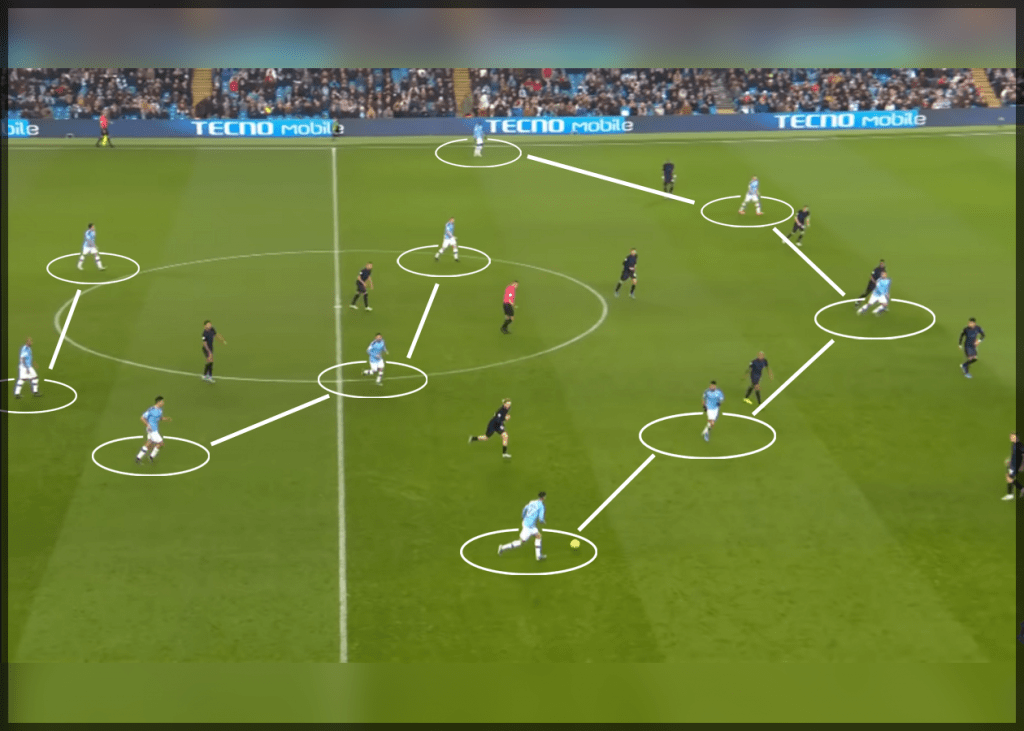
You can also use it as a benchmark and a starting point to more complex attacking setups; how can you adapt your current tactic to get more out of your attack or your creators. It can also help you realize which spots need work, or where you need a better player.
How to use the Five Channels to design a tactic on FM
As we commented previously, the five channels are the centre, the two flanks and the two half-spaces that appear in between them (sometimes called interior channels). The idea is to occupy all five zones on attack, to offer passing options and keep the defenders guessing. There is, of course, a myriad of ways in which this can be accomplished. How we do this will largely depend on the players at our disposal and the formation we chose to play. Let’s take a look at each of the zones to see how we can achieve great attacking movement on Football Manager.
The flanks
The role of the players on the flanks is to stretch the defence into a catch-22 situation. Either they follow your wide players and risk leaving the space in-between open, or play a narrow line and give time and space to any potential crosser of the ball. This can be achieved in two main ways.
Midfield Crosser
On the one hand, width can be achieved by fast, athletic and skilled wide men; these are the classic chalk-on-your-boots type wingers, meant to play hugging the sidelines. They effectively widen the playing area of the pitch and give defenders as much ground to cover as possible. This method also provides some defensive solidity as having your wide defenders as a supporting option behind means they will (mostly) always be around to close down any danger. However, that means the risk of your winger being 2v1-ed and marked out of the game is a possibility.

Useful Roles: Winger, Wide Midfielder, Defensive Winger.
Useful Attributes: Crossing, Dribbling, Technique, Decisions, Off The Ball, Work Rate, Acceleration, Agility, Pace, Stamina
Overlapping Wide Defender
On the other hand, the more fashionable (but not necessarily more effective) solution is the modern wingback. With modern fitness training, we see more and more dynamic runners that can go for the full 90 minutes. Once uniquely the feature of rock-solid back-fives, now it’s commonplace having wingbacks in a back-four. With the wide defenders providing width, the wide attackers are free to take on other roles; but if the wingback is found out, the defence will be exposed. The balancing act is dependent on having cover-up options and players with the smarts to know where to be at all times.

Useful Roles: Wing-Back, Complete Wing-Back, Full-Back (particularly on Attack Duty).
Useful Attributes: Crossing, Dribbling, Marking, Tackling, Anticipation, Concentration, Decisions, Positioning, Teamwork, Work Rate, Acceleration, Agility, Pace, Stamina
The centre
The player or players occupying the centre space are vital for any attack. They have the role of either finishing the attack or creating, as a pivot and organizer. Depending on how your team plays, what players you have at your disposal and which formation you’re playing, you’re going to favour one or the other as your attack’s spearhead.
Pure Scorer
With the central channel as the main scoring threat, you need to look for a fast, clinical striker who can take the chances as they present themselves. Depending on the quality of players you have, a wider degree of defensive responsibility, build-up involvement and movement independence is available. However, the main objective must remain to put the ball in the net. The striker or strikers are the focal points; the rest of the system should be geared to providing them with the best scoring opportunities.
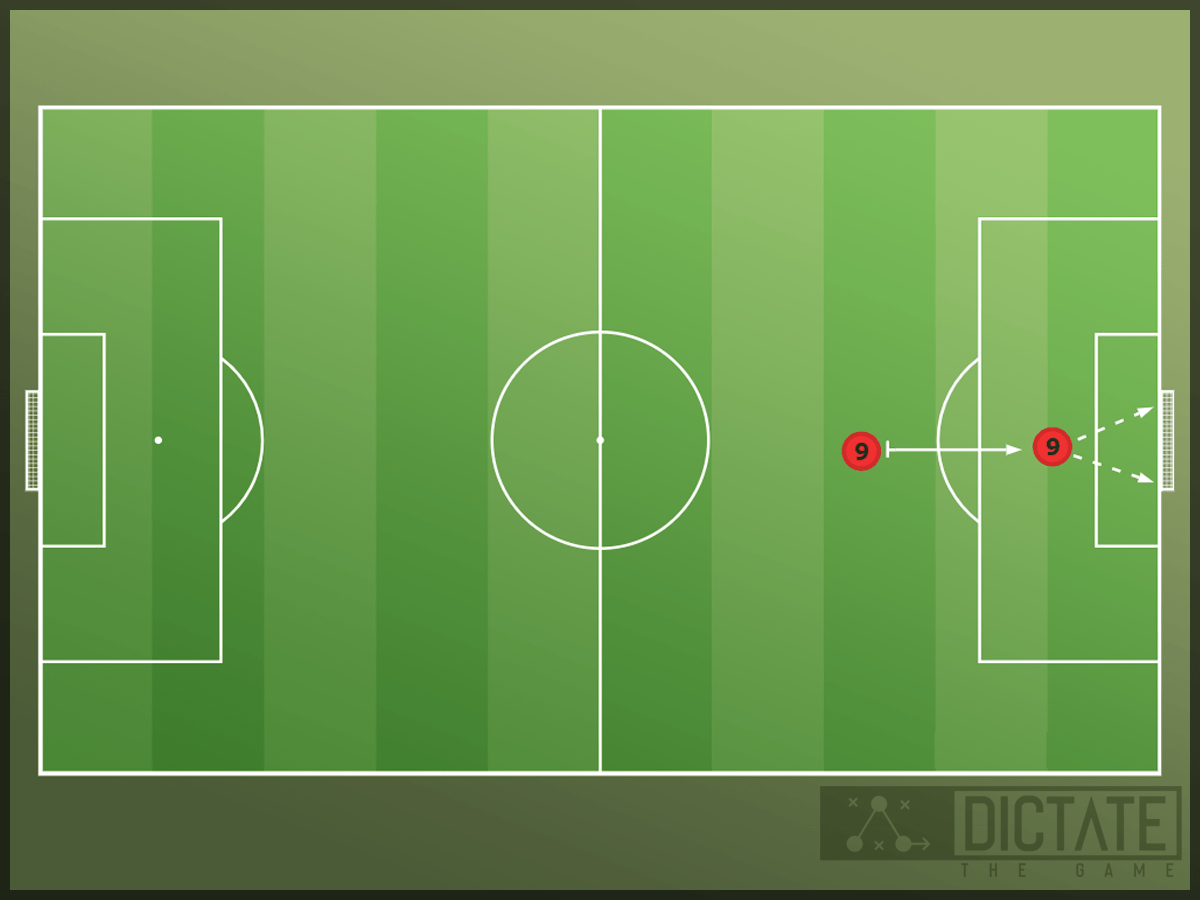
Useful Roles: Poacher, Advanced Forward, Complete Forward, Shadow Striker.
Useful Attributes: Dribbling, Finishing, First Touch, Technique, Anticipation, Composure, Decisions, Off the Ball, Work Rate, Acceleration, Agility, Jumping Reach, Pace, Strength.
Creative Forward
On the other hand, the central channel (by virtue of its centrality), can operate as a hinge that supports the rest of the attack. It can provide a passing option and drawing defenders out of position. It is one the oldest tricks in the book, but no less effective. This doesn’t mean the central channel player is banned from scoring, rather that it is not his main objective on the pitch. Again, depending on the players at our disposal, there are different degrees of involvement and refinement; at large you’re looking for a player with the technical capabilities and the mental sharpness to bring his teammates into play and move into the spots where he can receive the ball unmarked.
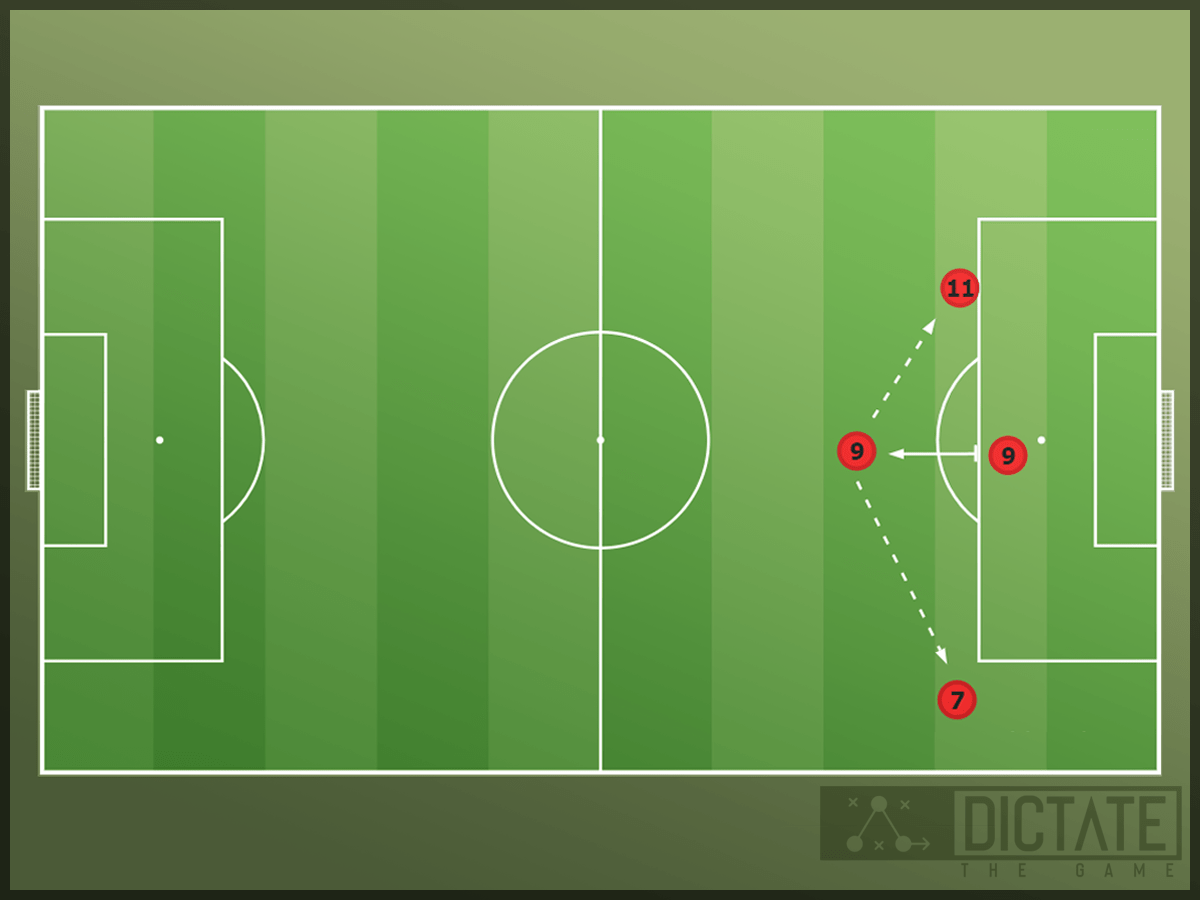
Useful Roles: Advanced Playmaker, Attacking Midfielder, Deep-Lying Forward, False Nine, Target Man.
Useful Attributes: Dribbling, First Touch, Passing, Technique, Anticipation, Composure, Decisions, Off The Ball, Vision, Work Rate, Acceleration, Agility, Balance, Strength.
The half-spaces
The half-spaces are one of the most interesting spots on the pitch. They can make or break a tactical setup and decide games on their own. Defined as the spaces amid the flanks and the centre, they can be most easily seen as the spaces often left halfway between the fullbacks and the centrebacks in a back-four. Thus, players in this spot can be used on many different functions and take on various responsibilities. This makes the half-space channels highly adaptable and important.
There are three general ways to use the half-spaces. You either want players moving from the centre into the inside channels, cutting in from the flanks or running along the channels to provide support.
Interior Receiver/Wide Scorer
A great way to occupy the half-spaces is by starting from a wider position and then shifting inside to find spaces. This has two functions. First, it looks to draw any wide defenders outside of position by forcing them to follow, creating space on the flanks for an overlap. Secondly, it looks to find space to pass into the space behind the defence, attack the box or shoot; players with their preferred foot on the inside have wider angles to operate and force defenders to cover space with their weak foot.
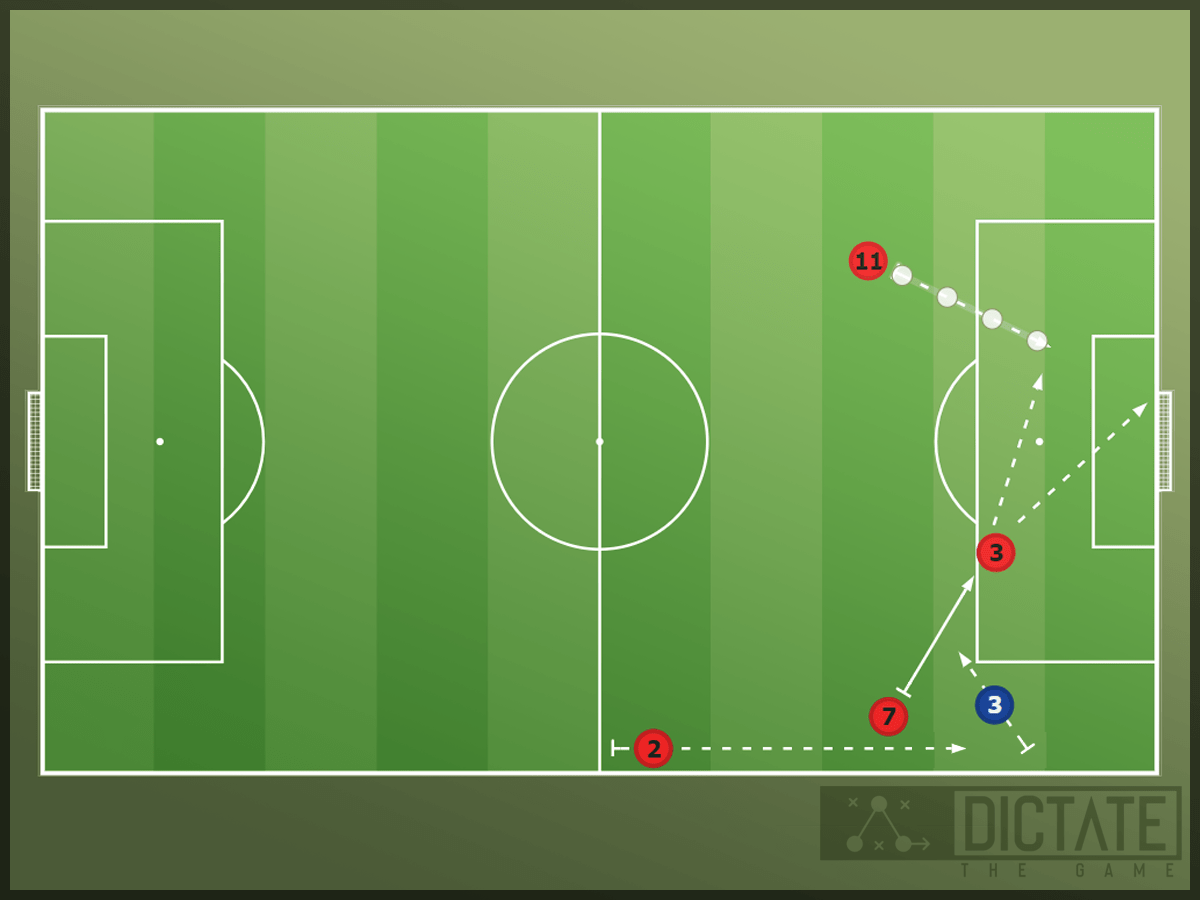
Useful Roles: Inside Forward, Inverted Winger, Advanced Playmaker, Wide Playmaker, Wide Target Man.
Useful Attributes: Crossing, Dribbling, Finishing, First Touch, Passing, Technique, Composure, Decisions, Off The Ball, Teamwork, Work Rate, Acceleration, Agility, Pace, Strength.
Half-wing
The half-space player by default, a half-wing is any player that starts play from the centre and shifts across the pitch into wide areas to occupy the interior channels. This can often be used to generate overloads on the flanks; it creates 2v1 situations with the wide player against the opposition’s defenders. They can also advance the ball in space, as the wide and central attackers fix opposing defenders on their spot, preventing them from closing down. The half-wing requires a combined skill set that allows him to thrive all across the pitch.
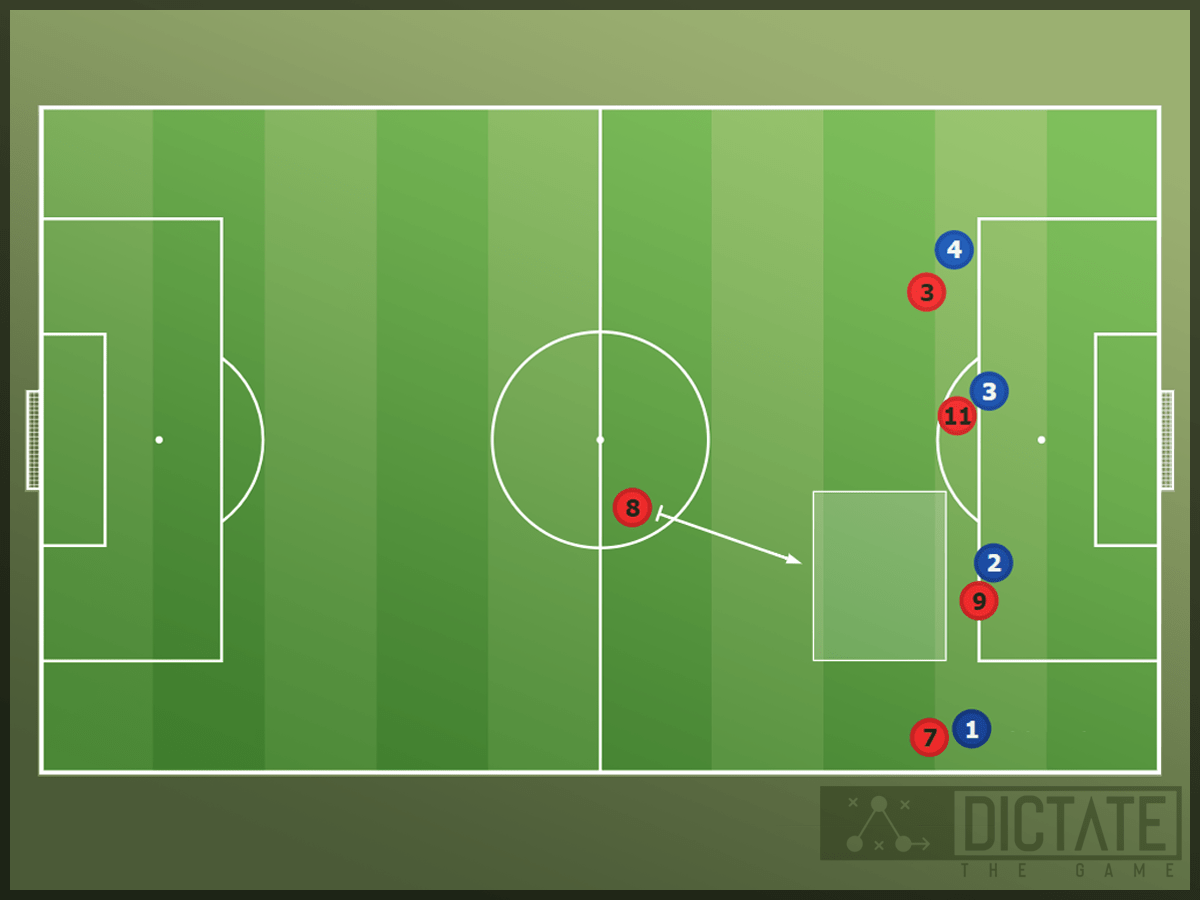
Useful Roles: Mezzala, Advanced Playmaker, Roaming Playmaker, Central Midfielder (particularly on Attack Duty).
Useful Attributes: Crossing, Dribbling, First Touch, Passing, Technique, Anticipation, Decisions, Off The Ball, Vision, Work Rate, Acceleration, Agility, Balance, Stamina
Support Runner
Last but not least, you can use the half-spaces to provide supporting runs from midfield. These players offer a passing option on different spots, improving ball movement without sacrificing defensive solidity. You’re gonna need a dynamic, energetic player that can cover a lot of ground and a variety of technical proficiencies.
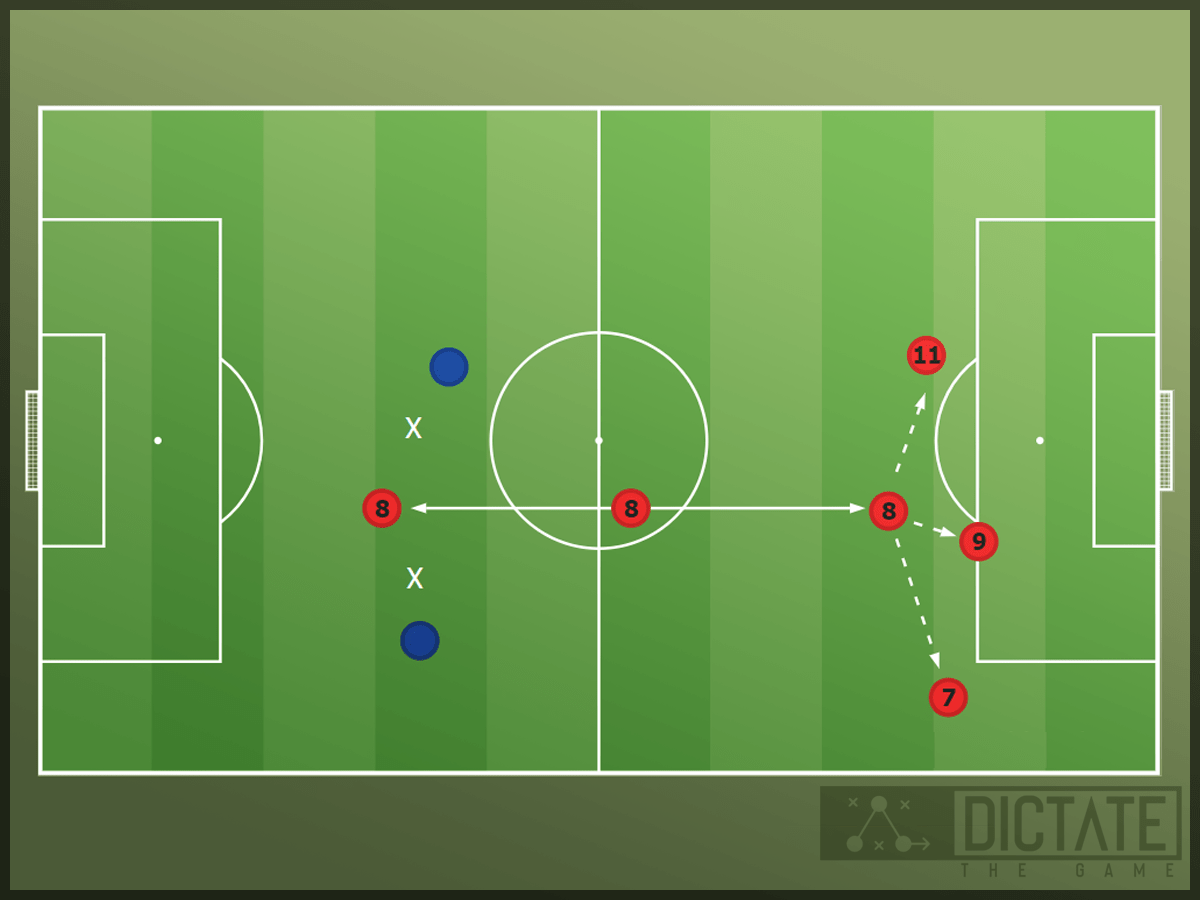
Useful Roles: Carrilero, Box to Box Midfielder, Central Midfielder (particularly on Support Duty).
Useful Attributes: Dribbling, Passing, First Touch, Anticipation, Concentration, Decisions, Off The Ball, Positioning, Teamwork, Work Rate, Agility, Balance, Stamina, Strength.
Using the Five Channels: A case study
Assembling a tactic is a bit like the work of a watchmaker. The tiny pieces move together in a system where the failure of one can mean the failure of them all. The Five Channels give you a blueprint, but you still have to choose which pieces you’re going to use, and where to put them. Let’s look over a particular case study to see the idea in action.
This is my current set up, in a save I’m doing with Belgian third tier side RFC Liege.
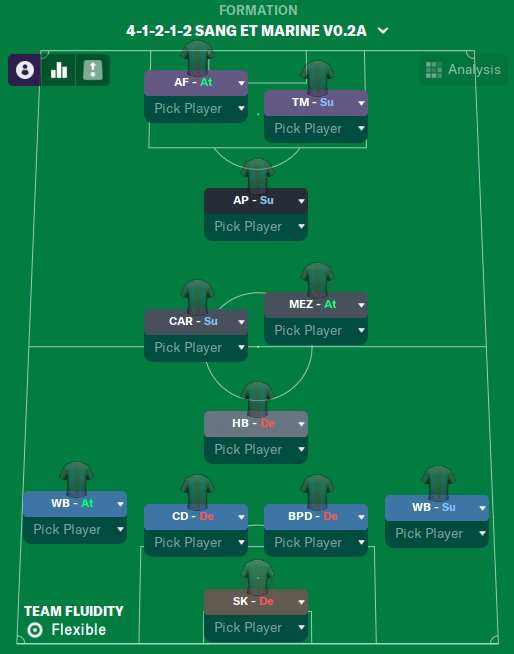
From the get-go, the 4-1-2-1-2 doesn’t look like a formation that can work with the demands of the five channels. However, you have to remember always that the formation is the defensive shape of a team, but not necessarily the attacking shape. So, how do the roles we’ve selected move when in the attacking phase?
The flanks
When I took over the team I had no valid options for a winger to use as a midfield crosser. Thus, from the get-go, I decided I was gonna use Wingbacks to provide width and feed balls into the box rather than force a system on a team that hadn’t the players to pull it off.
Normally that would’ve meant falling into a back three to provide cover. Sadly, centrebacks were another weak spot of this team, so I settled for a back four with a sitting midfielder as a sweeper of sorts.
The centre
What the squad did have was a talented no.10 that could provide creativity, so the use of an AMC was nearly mandatory. That meant, however, that we were gonna have to use him as a creative forward; he simply did not have the scoring capacities to take the lead in the attack.
Instead, I decided to use him in the hole and assisting/creating opportunities. I used him as an AP-S, with added instructions to have him see more of the ball and do more with it.
The half-spaces
With a proficient no.10 operating behind them, my choice was to use a striker duo as the main goal-scoring threat. I needed two players to stay on the shoulder of their centreback, looking for runs into space behind the defence or to drop and receive in space.
Limited by my available personnel, I chose an ever-mobile AF but added a number of instructions to the TM to make him stay wider. The idea was to have him almost as a half-WTM, providing support to the overlapping midfielder and wingback.
The whole picture
Thus, this is how I planned my attack to move and operate according to the roles and instructions I had selected.
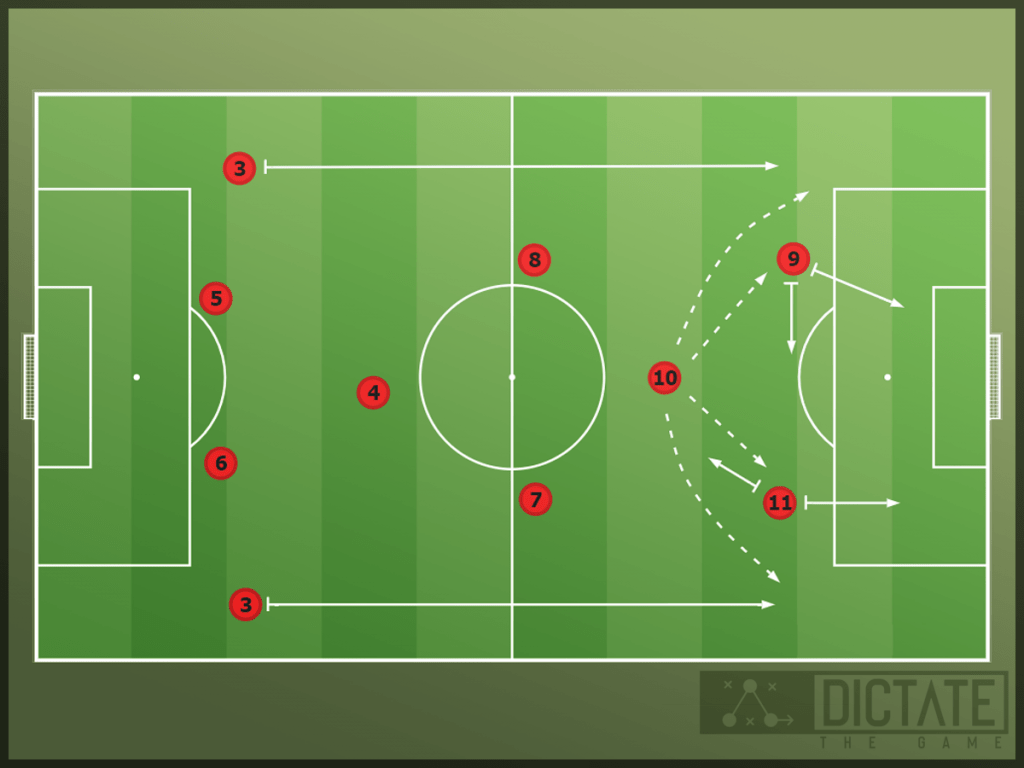
Did it work? Well, we did get a promotion in our second season. More than that, however, I’ve been seeing much of what I planned for on the drawing board in the pitch, which is one of the clearest indications of a tactic working.
To conclude…
All this is not to say that every working tactic must somehow fall into this model. It also doesn’t mean that every tactic that takes advantage of this particular blueprint is a working marvel. Rather, I think this method is an interesting tool to measure your tactics’ attacking movement.
Is it giving the defence enough problems to deal with? Are you making the most of your squad? Are you seeing what you want to see on the pitch? Perhaps your side’s attack is getting a bit stale lately and you’re looking for ways to shake it. Perhaps you’ve just taken over a new team and are thinking of ways to best use your new players. Whatever the case, hopefully this can help you create deadly attacking movement on Football Manager and reap the rewards.
Enjoyed this? Here are other articles for you:
Total Football Journeyman: Arrigo Sacchi & The Cult of Universal Player
Football Manager – Revolutionary Football?
Six Teams to Manage in the MLS | FM21
Managing your Squad during Fixture Congestion on FM21
Selling your Squad Players in FM21
2 thoughts on “The Five Channels: Attacking movement on Football Manager”
Nice read buddy, gives an idea of attacking principles needed in football.